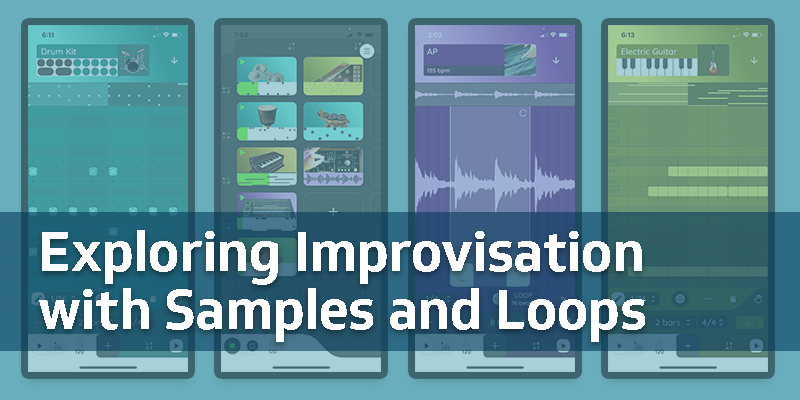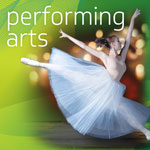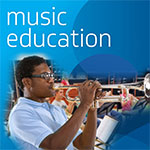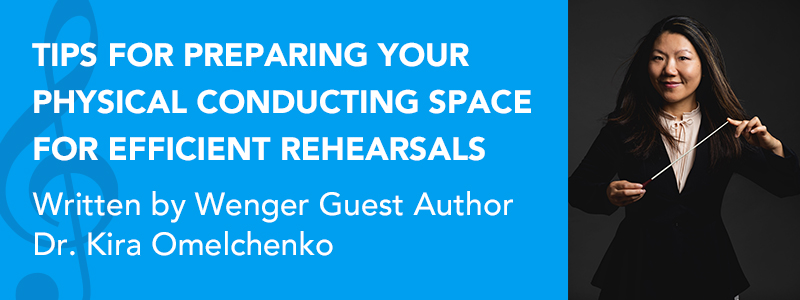
Written by Wenger Guest Author, Dr. Kira Omelchenko, Associate Dean – Performance and Recruitment, Associate Professor of Music, Conductor of the Laurier Symphony Orchestra, Wilfrid Laurier University (Ontario, Canada)
Dear Music Educators,
The following tips I share with you are gathered from my 12 years teaching, rehearsing, and conducting orchestras and operas, as well as from observing and learning from many inspiring musicians and educators like yourselves. I hope you will find these helpful to you and in your rehearsals. Thank you for all your time, inspiration, joy, and love you give to your students and their parents, your school, and the greater community.
Be Comfortable and Stay Hydrated
-
- Stay hydrated – keep plenty of water near you and have multiple bottles as needed.
-
- Have a large, oversized score? Use 2 stands as needed, get creative in how you use the stands to help make page turns easier.
-
- Sweat a lot? Keep a cloth/rag handy and near you.
-
- Wear comfy shoes and clothing.
-
- Pre-set your podium(s) and music stand(s) before rehearsal begins.
- Use double podiums (stacked on top) as needed to see the whole ensemble (Thanks Wenger!)
- Set the height of the music stand to your height.
-
- X marks the spot – use tape to mark (spike) on the ground where you want the podium to be (this can be helpful if you always use the same room for rehearsals).
- Pre-set your podium(s) and music stand(s) before rehearsal begins.
-
- Conducting outside? Keep clips and clothespins on you to secure pages – it can get suddenly windy.
Equipment Check List – Do you have or need the following?
-
- Score(s)
-
- Rehearsal schedule and order/lesson plan
-
- Blank paper to write notes and reminders during rehearsal
-
- Pencils – I always lose at least one each rehearsal
-
- Water – to stay hydrated
-
- Tuner
-
- Metronome
-
- Sticky notes (if needed)
-
- Recording device (if needed)
-
- Microphone (if needed in a large rehearsal space)
-
- Speakers and hook up chords (if needed)
-
- Phone (if needed)
-
- Any other technology (if needed)
Help Manage Your Time
-
- Where’s the Clock?
- Is it somewhere you can see it easily without having to turn your head?
- Situate the classroom setup so you see the clock, instead of your students having a clear view of the clock and counting down to the end of class.
-
- If there’s not a clock in the room (or if it’s broken), keep a small clock in front of you on an extra stand.
- Where’s the Clock?

-
- Do you struggle with losing track of time?
- Set timers on your phone to go off on vibrate so you feel/hear it vibrate.
-
- Have a visual timer count down in the back of the room so only you see it.
- Do you struggle with losing track of time?
-
- Posting the Rehearsal Order
- Email out the rehearsal order to students so they have it ahead of time.
- Have the order of rehearsal already written on the board at the start of class.
-
- Write the order of rehearsal on a dry erase board that can be set outside the rehearsal room before each class. This helps students know the rehearsal order and when it’s their turn to come in (helpful for students who rotate in rehearsal or do not play in every piece.)
- Posting the Rehearsal Order
Sticky Notes – Help Prioritize and Brighten Up Your Rehearsal
-
- I love using sticky notes of various colors to help remind me of sections to look at/review for the next rehearsal.
-
- Use colorful sticky notes – helpful for large pieces and huge opera scores. Sometimes I find this more helpful to see the spot in the score to go to right away, instead of looking at my long list of spots and then trying to find it in my score…plus colorful sticky notes add some bright fun colors to my rehearsal.
-
- In preparation for my next rehearsals, I go through the music and put in sticky notes on spots to work on.
-
- Sometimes with a large difficult score, I’ll feel overwhelmed and won’t even know where to start rehearsing. Sticky notes help me prioritize my rehearsal, start with spots that need the most immediate attention, and help keep me focused. For these top priority spots, I’ll draw a star at the top of the sticky note, use a bright color (pink) sticky note, and make sure these sticky notes stick out taller from the others so they’re clearly visible.
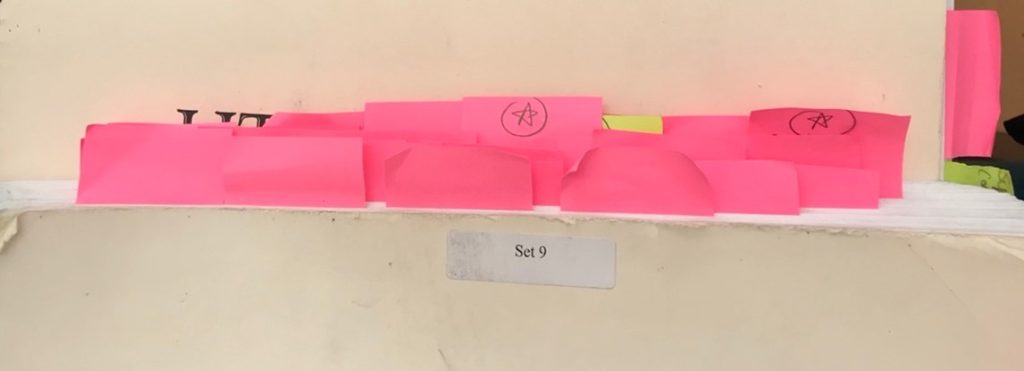

-
- Example of color assignments: pink for spot for everyone, blue for brass spot, green for wind spot, orange for string spot, yellow for percussion spot, etc (choose whichever color/shapes you want!)
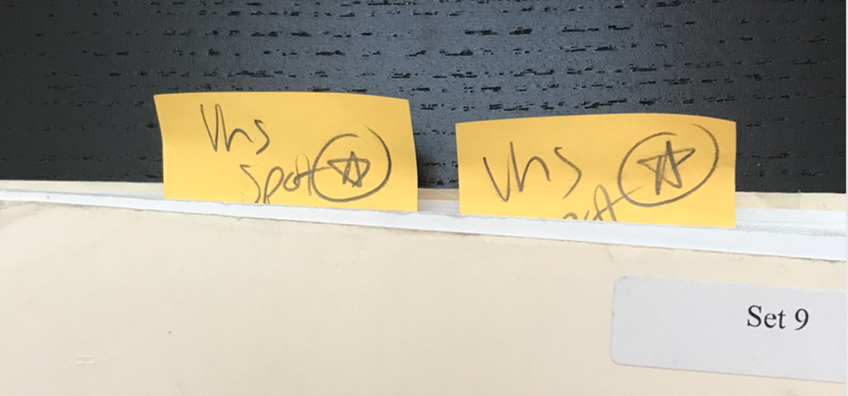
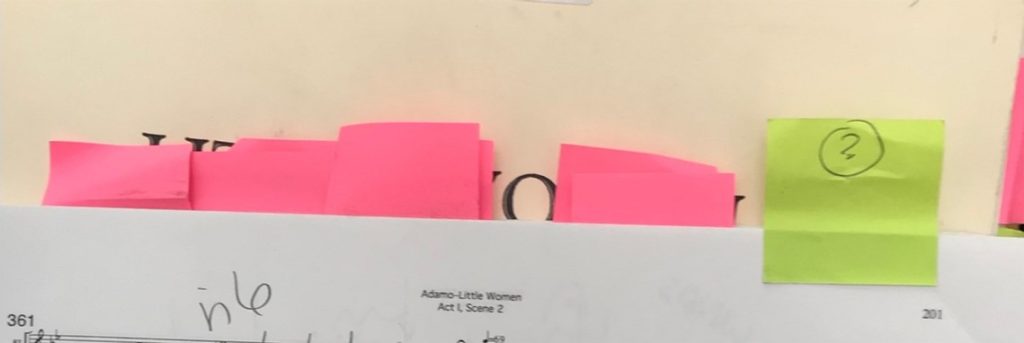
-
- Then as we tackle each spot in rehearsal, I take the sticky note out and this gives me a great sense of accomplishment.
-
- Sticky notes also help remind me when to end a spot. I’ll put one at the start of the spot and write “start” and then put another one at the end of a spot and write “end” on it. This helps remind me to not go further in the score, and instead to jump ahead to the next problem spot.
-
- Use sticky notes as a quick reminder during a run-through of a piece in rehearsal. I’ll want to remind myself of spots to go back and clean up. Instead of trying to remember all those spots, I’ll pre-set some sticky notes (more than I need) on the extra stand next to me, so I can simply grab and go and stick them on the page while I’m conducting. This saves me time and keeps my ears open to the ensemble and doesn’t get in the way of my conducting.
Extra Stand (and what to use it for?)
-
- Small Clock
-
- Rehearsal schedule/lesson plan
-
- List of announcements to give at the start of rehearsal
-
- List of instrumentation and names of players
-
- Blank paper – to write down reminders and notes
-
- Extra pencils
-
- Other scores needed for rehearsal
-
- Personal items (phone, keys—I always lose my keys so it’s good to have it in an obvious place)
-
- Technology as needed (tuner, metronome, recording device, etc.)
Conducting in the Pit
-
- Consider lighting. Do you need stand lights and how many and what kind (battery operated, LED lights, plug in)?
-
- Outlets and chords for stand lights (if needed)
-
- If using wireless battery-operated stand lights, check the lights and make sure batteries are good and fresh, especially before a run-through, dress, or performance.
-
- Keep extra batteries on you if using wireless stand lights (in case of emergency).
-
- Bring layers of clothing, as some pits can get chilly.
-
- Snacks and water – is there a shelf behind you or next to you to store snacks?
- White background – it can be dark in the pit and if you’re wearing black it may be difficult for players to see you in the dark pit. Hang a white sheet or curtain behind you so players can see you better.
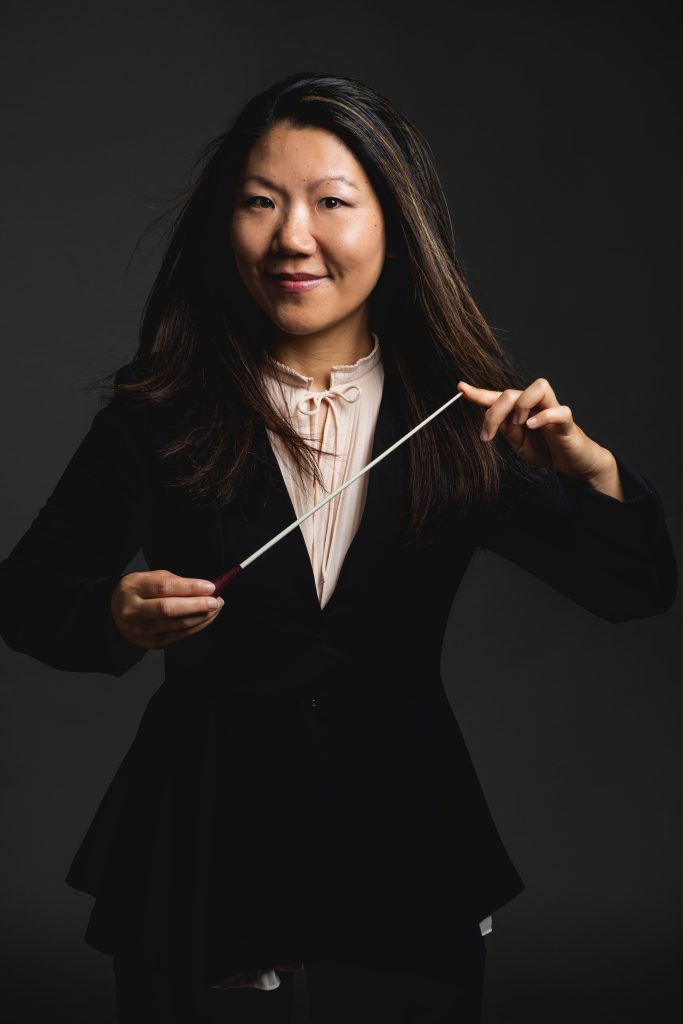
Winner of the International Conductors Workshop and Competition and the Mastering Concerto Conducting Festival (Bulgaria), Dr. Kira Omelchenko is the Associate Dean of Performance and Recruitment, an Associate Professor of Music, and the Conductor of the Symphony Orchestra at Wilfrid Laurier University (Ontario, Canada).
She is the winner of the 2022 National American Prize in Music (Ernst Bacon Memorial Award), a past prize winner in the opera conducting category, and was a finalist in the 2022 virtual concert production category. A passionate educator, Dr. Omelchenko was nominated for a Grammy Music Educator Award, the Laurier Innovation in Teaching Award, and received the prestigious 2018 FSC Miller Distinguished Professor Award.
Dr. Omelchenko’s research on health and music has been published in Health Education Journal (SAGE publications, UK) and her research on the delivery of remote orchestra ensemble during the COVID-19 Pandemic is published in IAFOR International Arts & Humanities Academic Forum). She holds degrees from the Knox College, the University of New Mexico, and a doctoral degree in orchestral conducting from the University of Iowa.


